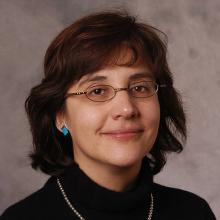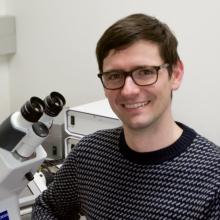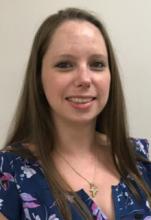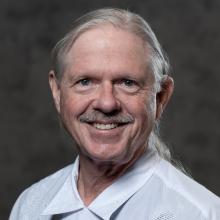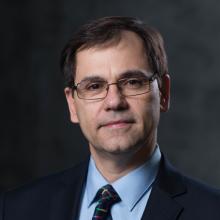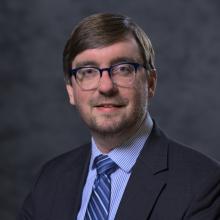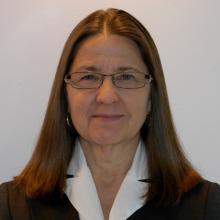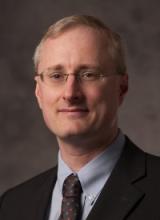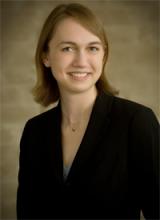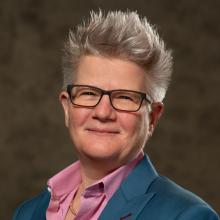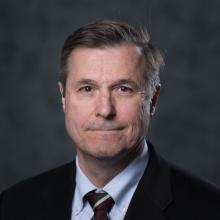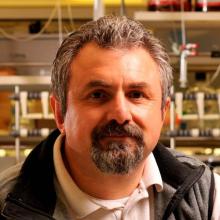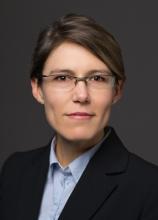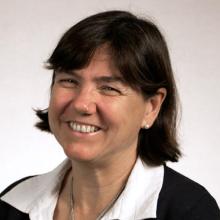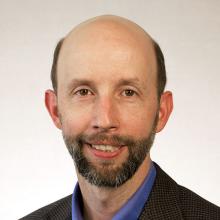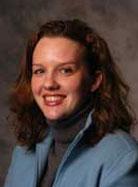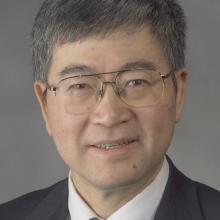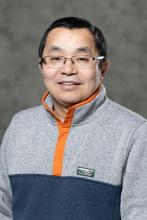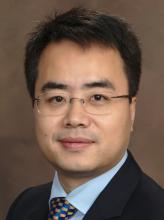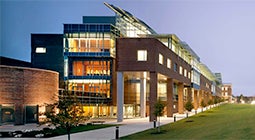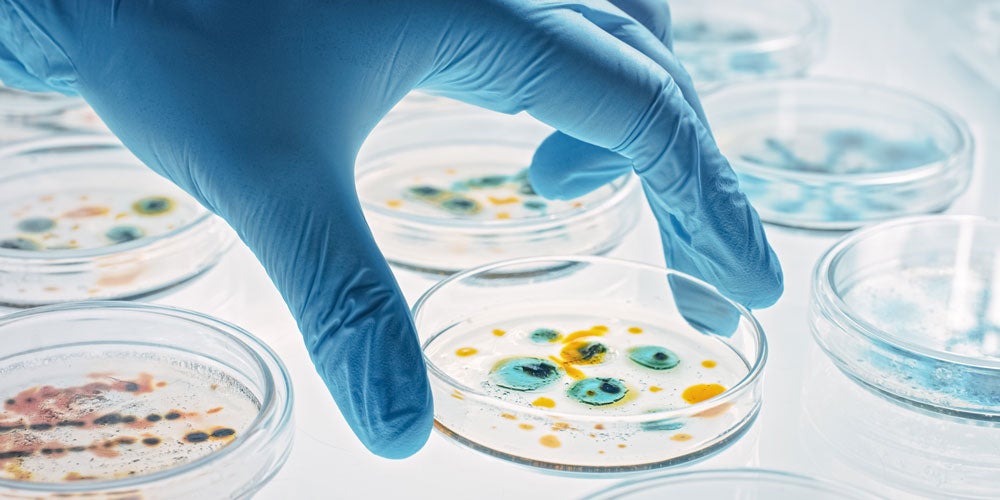
CBIS continues to build on almost two decades of basic and applied research in viruses, cancer, osteoporosis and osteoarthritis, diabetes, regenerative medicine, and sleep disturbances. The Rensselaer creation of a synthetic, contaminate-free form of the anticoagulant heparin has changed medical practices in many disciplines. We continue to provide research leadership at the frontiers of medicine, including solutions for pandemics such as COVID-19, bioengineered anti-bacterial coatings for medical devices, using personalized 3D printing for individual medical devices and tissue repair, stem cell bioengineered molecules, and nanoscale therapeutics. Looking ahead, we envision continued contributions to the development of personalized medicine — which is really the holy grail of biotechnology and other health-related research that is taking place at Rensselaer and around the world. To promote these endeavors, we are establishing affiliations that will contribute valuable resources to our existing strengths.
Current Research
Blanca Barquera, Professor, Biological Sciences, Department of Biological Sciences
Professor Barquera’s research focuses on the physiology and biochemistry that allow bacteria to adapt and proliferate in diverse environments. In particular, her team is interested in understanding the role of ion gradients involved in producing energy and maintaining stable, favorable internal conditions in spite of changing environments. Professor Barquera heads research into three interrelated projects:
- Energy metabolism of the gut bacterium Bacteroides fragilis: investigating a new paradigm in which this organism, previously classified as a strict anaerobe, actually depends on aerobic respiration for its survival and role in the community of intestinal microflora.
- Adaptation to changing environments by the opportunistic pathogen Pseudomonas aeruginosa, focusing on enzymes that generate and consume the Na+ and H+ gradients and how these systems function and interoperate.
- Functional and mechanistic studies of two redox-driven Na+ pumping enzymes: NQR and RNF from Vibrio cholerae and other bacteria.
Projects range from basic microbiology, characterizing the physiology of bacteria and their interactions with other cells, to biophysical chemistry, spectroscopy (visible, fluorescence, FTIR, and EPR) and rapid kinetics in order to understand the molecular mechanisms of ion transport and energy production enzymes. Studies include Vibrio cholerae, the cause of the disease cholera, Pseudomonas aeruginosa which are implicated in cystic fibrosis, as well as Bacteroides fragilis, which are beneficial gut bacteria, and use infection models including mice, macrophages, and fruit flies.
Ryan Gilbert, Professor, Biomedical Engineering
The Gilbert Lab studies the use of cell types such as astrocytes, dorsal root ganglia, macrophages, and schwann cells to apply various research technologies and models to interrupt and repair tissues. The study of biomaterials encompasses numerous methods for delivering drug treatments.
Juergen Hahn, Professor and Department Head, Department of Biomedical Engineering, Department of Chemical & Biological Engineering
Professor Hahn’s systems research studies the behavior of dynamic systems. Since every system found in nature exhibits dynamic behavior in one form or another it is important to develop detailed models of a system in order to make predictions about its behavior under different scenarios. These models also allow us to gain insights into complex systems, such as physiological systems or cellular metabolic or signaling pathways. The application of systems theory to biological and biomedical systems is one major aspects of what is known as Systems Biology.
Jennifer Hurley, Richard Baruch M.D. Career Development Chair, Biological Sciences
Professor Hurley’s research focus is on the fundamental mechanisms underlying circadian rhythms. Circadian rhythms are an important component in understanding how organisms function within the photoperiodic world that we live in; defects in the circadian clock or disruptions in circadian rhythms are linked to a wide range of sleep, metabolic, and psychological disorders in humans, and to regulation of Alzheimer’s disease. Her lab investigates the relationship between the core clock mechanism and the output that the clock controls using a combination of molecular genetics and biochemical techniques as well as a biostatistical/computational approach using whole genome-scale data.
Robert Linhardt, Ann and John Broadbent, Jr. ’59 Senior Constellation Professor Biocatalysis and Metabolic Engineering, Chemistry and Chemical Biology
Professor Linhardt is widely known around the world for developing, along with Jonathan Dordick, synthetic heparin that replaces impure animal-derived proteins. He conducts numerous avenues of investigation in bioengineering and metabolic engineering, biomolecular interaction and the interactome carbohydrate analysis and structural biology, glyobiology and glycomics, nanobiotechnology and nanoscale and microscale devices, and synthetic carbohydrate chemistry. Professor Linhardt holds joint appointments with the Department of Chemistry and Chemical Biology, Department of Biology, Department of Chemical and Biological Engineering, Department of Biomedical Engineering and the Rensselaer Nanotechnology Center.
George Makhatadze, Constellation Professor in Biocomputation and Bioinformatics, Biochemistry, Bioenergetics and Physiology
Professor Makhatadze’s research focuses on the interconversion of metabolites in the many complex reactions of life including the mechanisms whereby enzymes catalyze and regulate these reactions, the metabolic pathways and biochemical communication across cells and throughout organisms, and the structure and function of the molecular components of living organisms. Biochemists advance the frontiers of research in both the basic life sciences as well as in applied fields such as medicine and biotechnology. Interdisciplinary collaborations tackle stimulating questions including the bioenergetics of microorganisms, the conversion of chemical energy into force and motion by molecular motors, the transport of ions across membranes, the importance of DNA repair to aging, cell cycle control, and metabolic engineering of biochemical pathways.
Kristen Mills, Assistant Professor, Mechanical Aerospace and Nuclear Engineering, School of Engineering
Professor Mills heads an experimental cell and tissue biomechanics laboratory focused on understanding the role of mechanics in disease initiation and progression. Her team is currently involved in studies utilizing in vitro models of tumor growth in order to probe the relationship between tumor cells and their biomechanical environment. Projects her lab has investigated include: The mechanics of tumor cell interactions and tumor growth; three-dimensional single cell patterning; fiber-reinforced hydrogels; the biomechanics of lymph vessels and their role in tumor malignancy; characterizing the biomechanical heterogeneity of neurofibromatosis; mechanical characterization of common bioengineered ECMs using optically based micro-indentation.
Gaetano T. Montelione, Professor, Constellation Chair Chemistry and Chemical Biology, School of Science
Professor Montelione is an internationally recognized expert in structural genomics and protein NMR spectroscopy whose notable work includes elucidation of critical protein-protein interactions in cancer biology, and his key discoveries about the structure-function relationships of NS1 protein that form the basis for the use of live attenuated influenza vaccines in humans. For more than 16 years, he built and served as director of the NIH NIGMS Center for Structural Genomics at Rutgers.
Chunyu Wang, Professor of Biological Sciences and Chemistry and Chemical Biology
Professor Chunyu Wang applies nuclear magnetic resonance (NMR) spectroscopy to study Alzheimer's disease and Hedgehog signaling pathway. He and his team are currently interested in Alzheimer’s disease (AD) and cancer. In AD, he is studying the structural mechanisms of the generation of amyloid-β peptide (Aβ). He is also studying the interaction between glycan and tau, which facilitates the spread of tau pathology, neurofibrillary tangle (NFT, the other pathological hallmark of AD). In cancer, Professor Wang is studying the structural mechanism of Hedgehog signaling and p53 interactions.
Ge Wang, Clark & Crossan Endowed Chair Professor, Director, CBIS Biomedical Imaging Center
Professor Ge Wang and his team are currently working on a cross-disciplinary study, supported by the National Institutes of Health, to combine highly innovative photon-counting X-ray and lifetime optical imaging technologies — developed at Rensselaer — to allow biologists to observe drug delivery and its effect on cancer cells, in vivo and in real time. Professor Wang also heads a transdisciplinary team working on transformational investigations into the use of x-ray computed tomography, optical molecular tomography, and other unconventional methods with collaborators of unique caliber and insight.
Leo Q. Wan, Associate Professor of Biomedical Engineering
Professor Wan's laboratory works on the development of novel strategies for tissue engineering and regenerative medicine, and to establish innovative organ-on-a-chip devices for disease diagnosis and drug screening. His team utilizes interdisciplinary approaches including micro-/nanofabrication, pluripotent stem cells, tissue engineering, biomaterial, cell biomechanics, and bioimaging. Wan’s current research projects focus on (a) cell-based microdevices for development and disease, currently focusing on birth abnormalities in left-right asymmetry and (b) cartilage tissue engineering, with the emphasis of stem cells for tissue repair.
Pingkun Yan, Assistant Professor and Director of DIAL Medical Image Computing, Image-guided Interventions, Computer Vision, Artificial Intelligence
Professor Yan works in the translational medical research domain, focusing on medical imaging informatics and interventional oncology guidance using machine learning techniques through close collaboration with clinicians. His research goals are to quantify, augment and visualize the information residing in large-scale multi-modality medical imaging data using artificial intelligence and computer vision technologies. His research has been enabling new diagnosis and treatment approaches with higher accuracy and better efficiency.
Helen Zha, Assistant Professor in Chemical and Biological Engineering, Materials Science & Engineering
Preventing and mitigating the effects of viral infections are important goals for modern healthcare. Because viruses are often less than 100 nm in size, eliminating viral exposure is especially challenging and requires unique materials innovations. Professor Zha’s research aims to develop technologies that filter and deactivate viruses, as well as potentially detect the presence of virus-like particles. Such technologies include antiviral polymer coatings that can be applied to filtration media, thus enhancing the performance and operating lifetime of personal protective equipment such as face masks. Other technologies include viral surrogate particles that can be used to rapidly assess the performance of critical processes used to remove viral contaminants in biopharmaceutical manufacturing. Because preventing viral infections is a global challenge faced by communities with disparate resources, the work in these areas emphasize ease-of-implementation as a design criteria. The end goal is to create innovations that reduce viral exposure using simple strategies that respect the natural environment and require minimal re-tooling of existing manufacturing workflows.
Douglas Swank, Professor, Biological Sciences
Professor Swank has been a member of the Rensselaer faculty since 2005. He heads a dynamic, multidisciplinary laboratory of students, staff, and post-docs. His laboratory investigates how muscle powers an amazingly wide variety of locomotory tasks and modulate heart function. Research focuses in the lab include determining how variation between muscle fiber types (e.g. slow versus fast-contracting fibers) is generated, the mechanisms behind muscle mechanical properties such as stretch activation, and muscle diseases such as hypertrophic cardiomyopathy. An integrative approach is taken, starting with muscle genes and moving up in scale to protein expression and function, muscle mechanics, and whole organism studies. His research team primarily uses Drosophila for their studies, due to Drosophila's ease of genetic manipulation and mechanically testable muscles. However, we have recently started using mammalian muscle types to gain further insights.
Professor Swank's lab has primarily focused on the role of myosin, the molecular motor that powers muscle contraction, in modulating muscle mechanical properties. Drosophila is currently the only system that can be transgenically manipulated to express a specific myosin isoform or mutant myosin in a specific muscle type. The expressed myosin can be isolated from Drosophila to measure single and ensemble biochemical and biophysical molecular properties such as ATPase rate and actin sliding velocity. Laboratory members also measure mechanical properties (e.g., power, velocity and force) of isolated muscle fibers expressing transgenic myosin and relate altered fiber properties to changes in locomotion, such as flight ability. Besides myosin, the laboratory also investigates the function of other muscle proteins such as muscle LIM protein (MLP), actin and troponin C.
The lab investigates mechanisms behind several muscle and heart diseases such as familial hypertrophic cardiomyopathy (HCM) and distal arthrogryposis. HCM is an inherited genetic disease that is the leading cause of sudden cardiac arrest among young adults. The lab creates transgenic Drosophila models of these diseases and perform experiments to determine how these disease states alter the mechanical function of muscle and tp provide insights into possible treatments.

